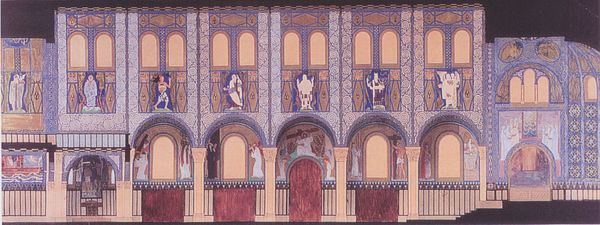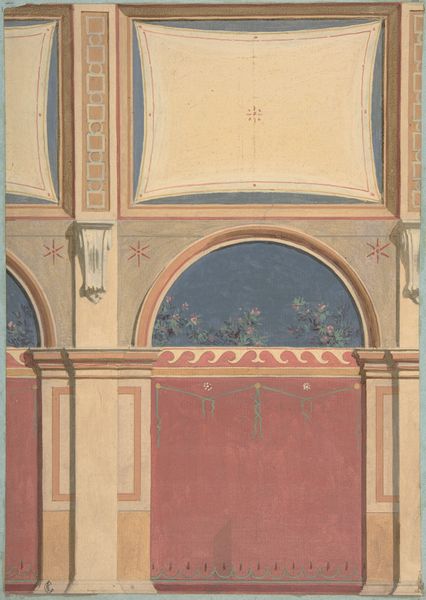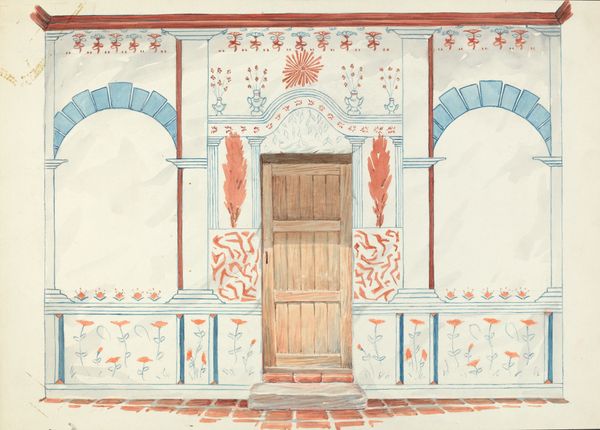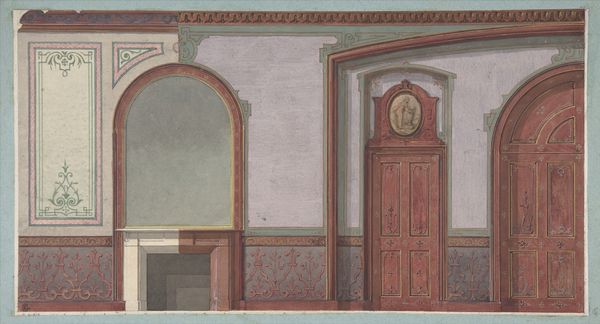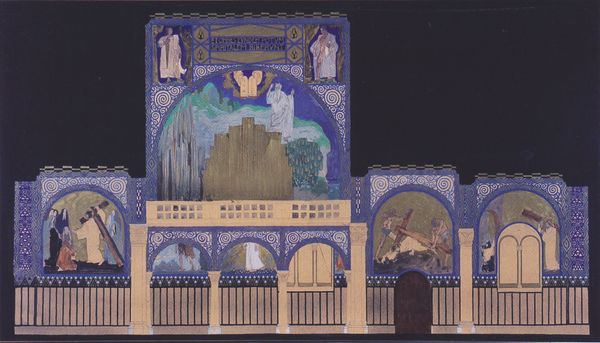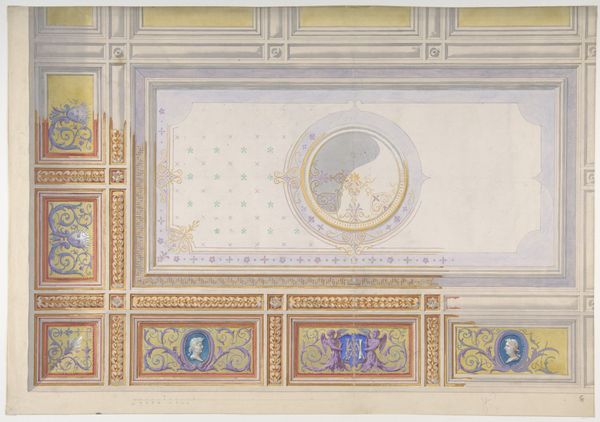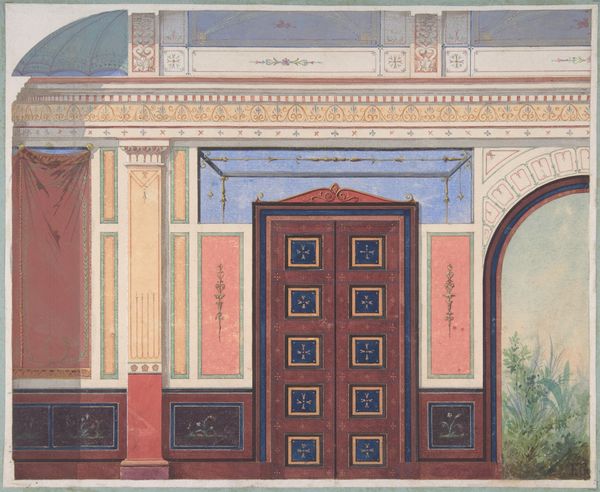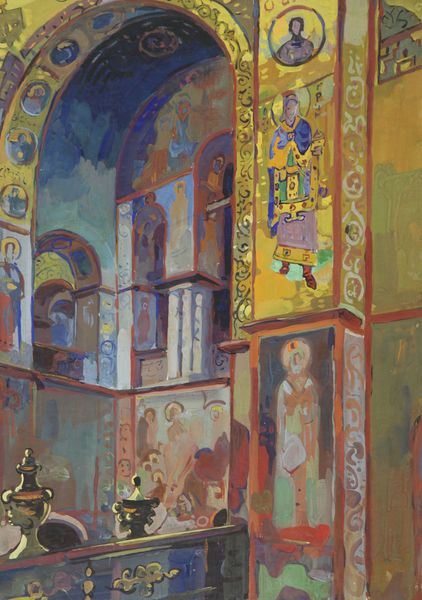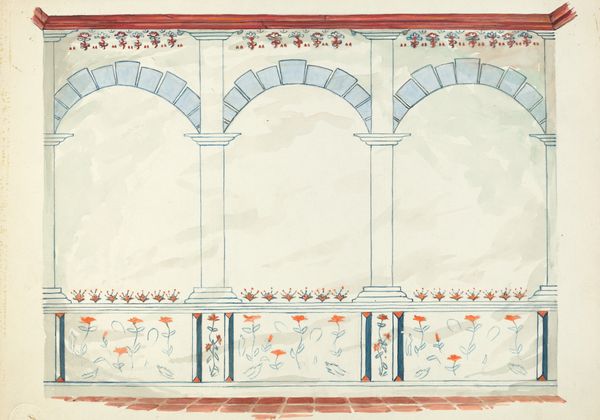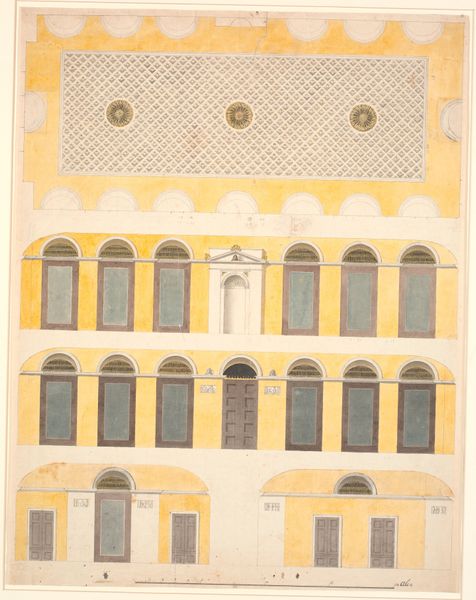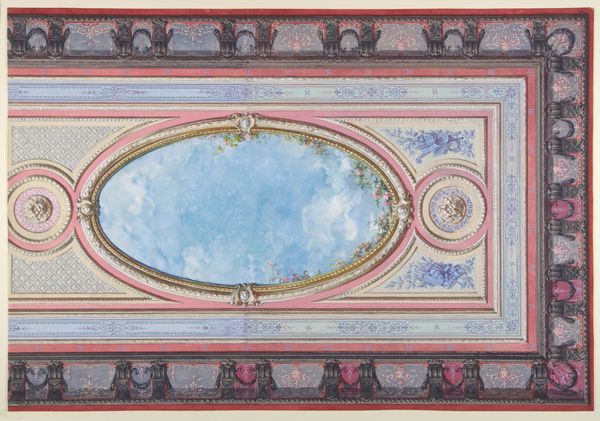
tempera, painting, mural, architecture
#
byzantine-art
#
art-nouveau
#
tempera
#
painting
#
mural
#
architecture
Dimensions: 78.4 x 228.5 cm
Copyright: Public domain
Editor: This is Koloman Moser's 1907 design for the right side wall of the Holy Spirit Church in Düsseldorf, executed in tempera. It looks like a Byzantine-era church interior. What catches my eye is the intense symmetry and the patterned surfaces. How do you read this design, approaching it formally? Curator: Indeed. Consider the meticulous articulation of space. Moser isn't just depicting a church; he's meticulously arranging a visual field. Note the rhythmic repetition of the arches and windows. These verticals create a stabilizing order, wouldn’t you agree? Editor: Yes, absolutely. And the color palette is striking – those blues and golds. Curator: Precisely. The restricted palette serves a crucial function. The dominance of cool blues, juxtaposed with gold, generates a visual tension. The ornamental patterning, confined within clearly defined areas, doesn't overwhelm but works in harmony with the overall architectural structure. It's all about visual control. What effect does that controlled palette have on you? Editor: It feels almost restrained, even with the intricate patterns. Not overwhelming, but powerful. It directs the eye where to look with contrast. Curator: Consider, too, the relationship between line and volume. The architecture provides the stable volumetric framework. Moser controls the ornamental elements within the spaces defined by line and creates order from that relationship. Editor: That’s really fascinating. I never would have considered the use of visual restrictions as a compositional strength. Thank you. Curator: My pleasure. It is by restraining some of the visual tools that we emphasize those others.
Comments
No comments
Be the first to comment and join the conversation on the ultimate creative platform.
